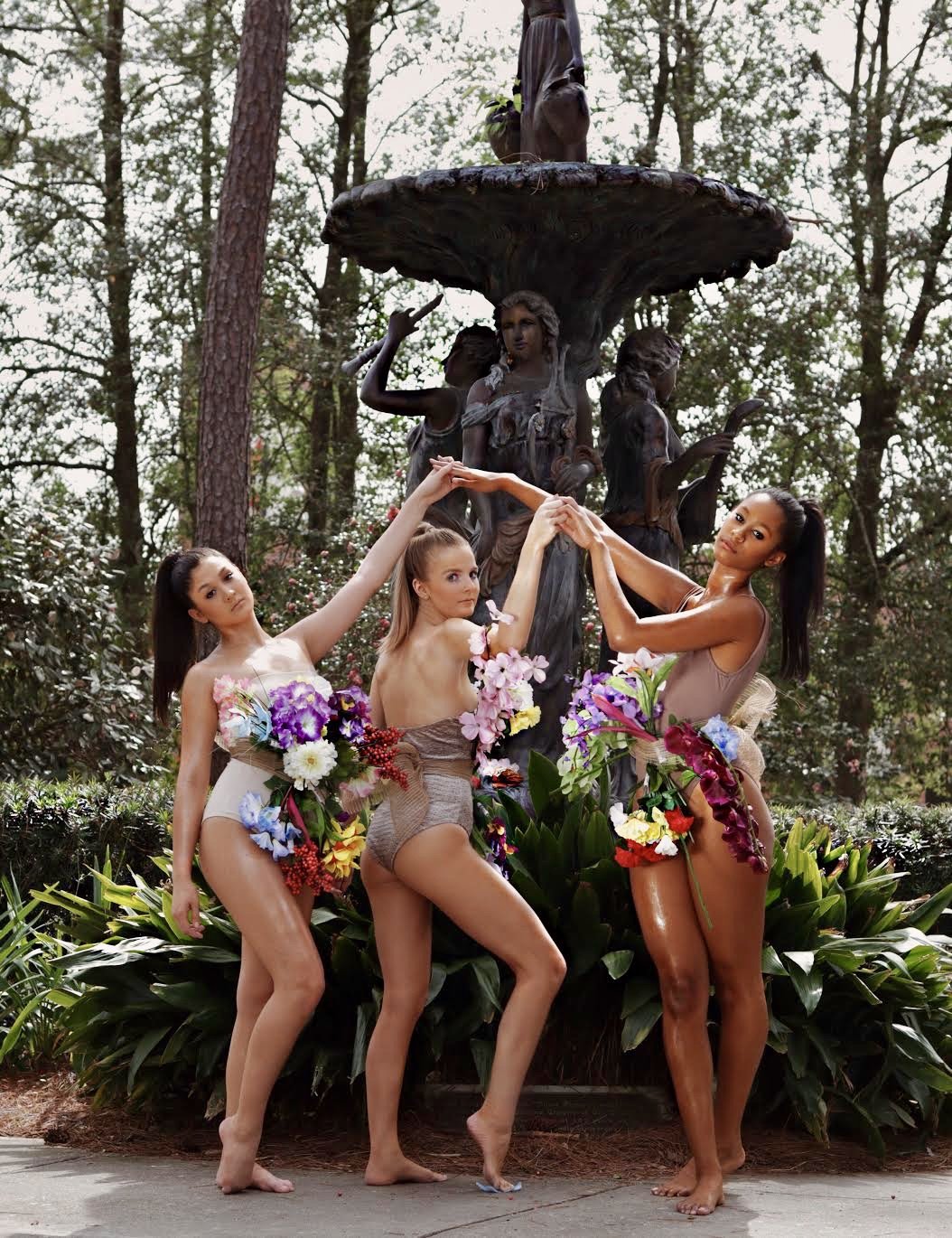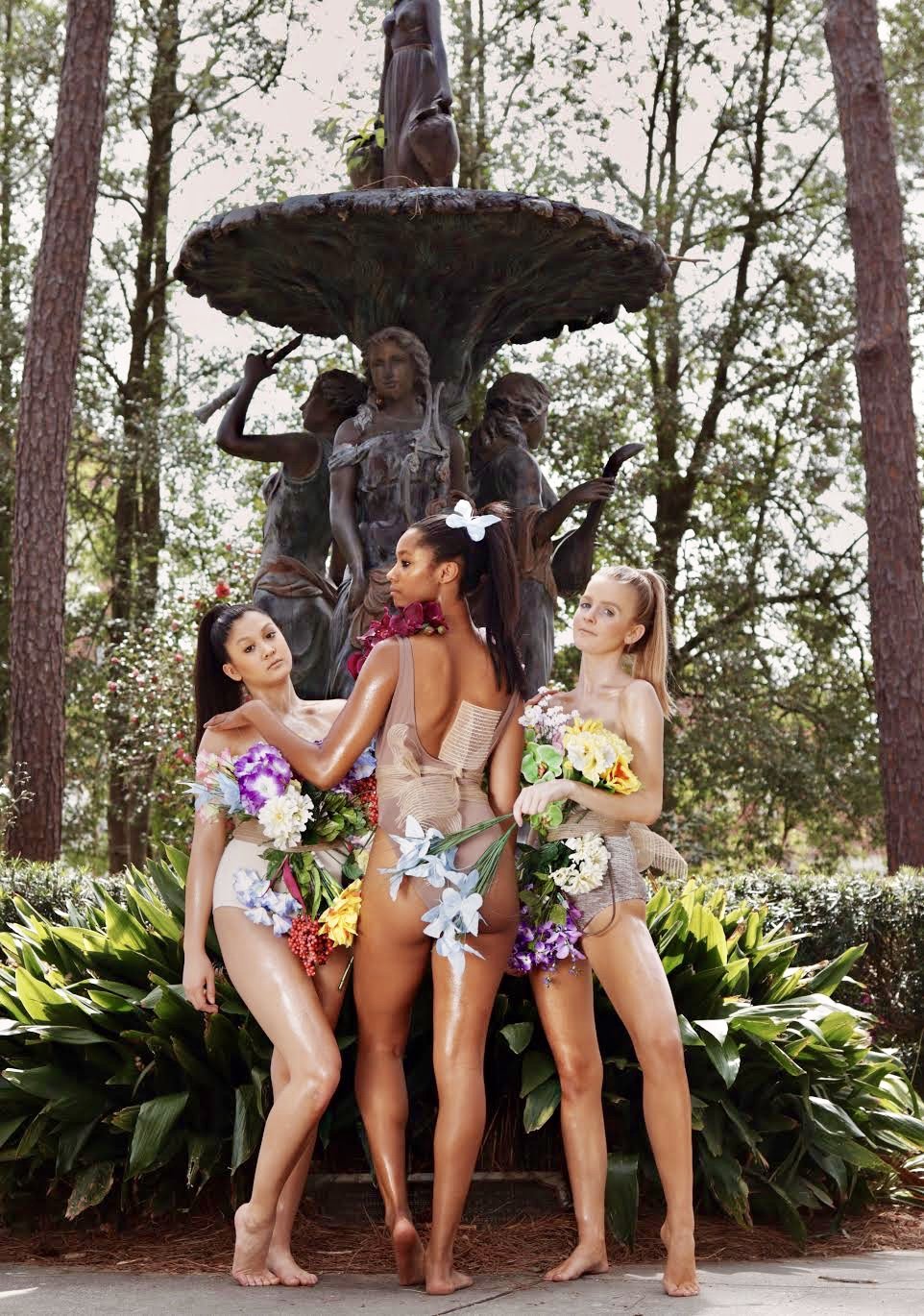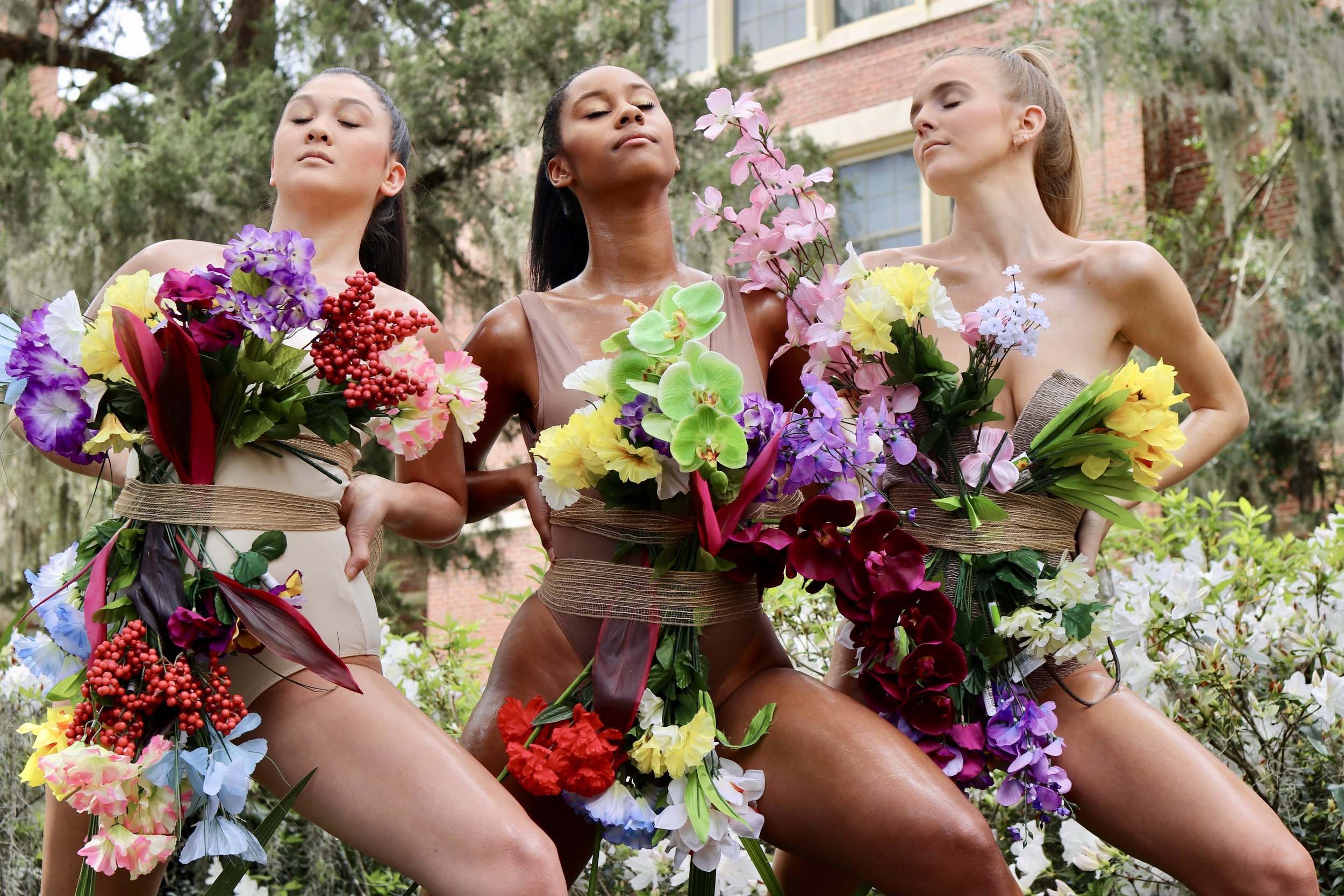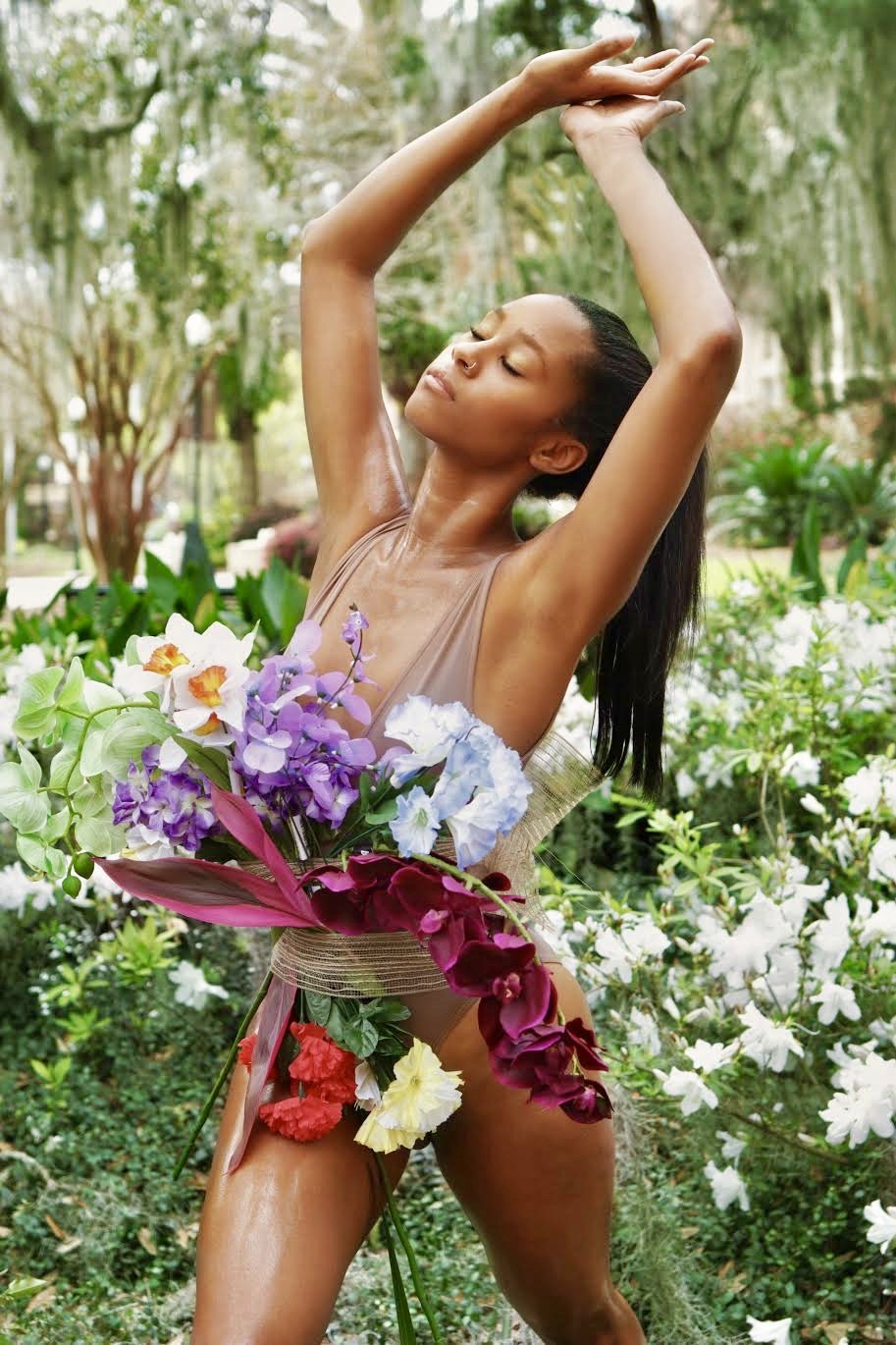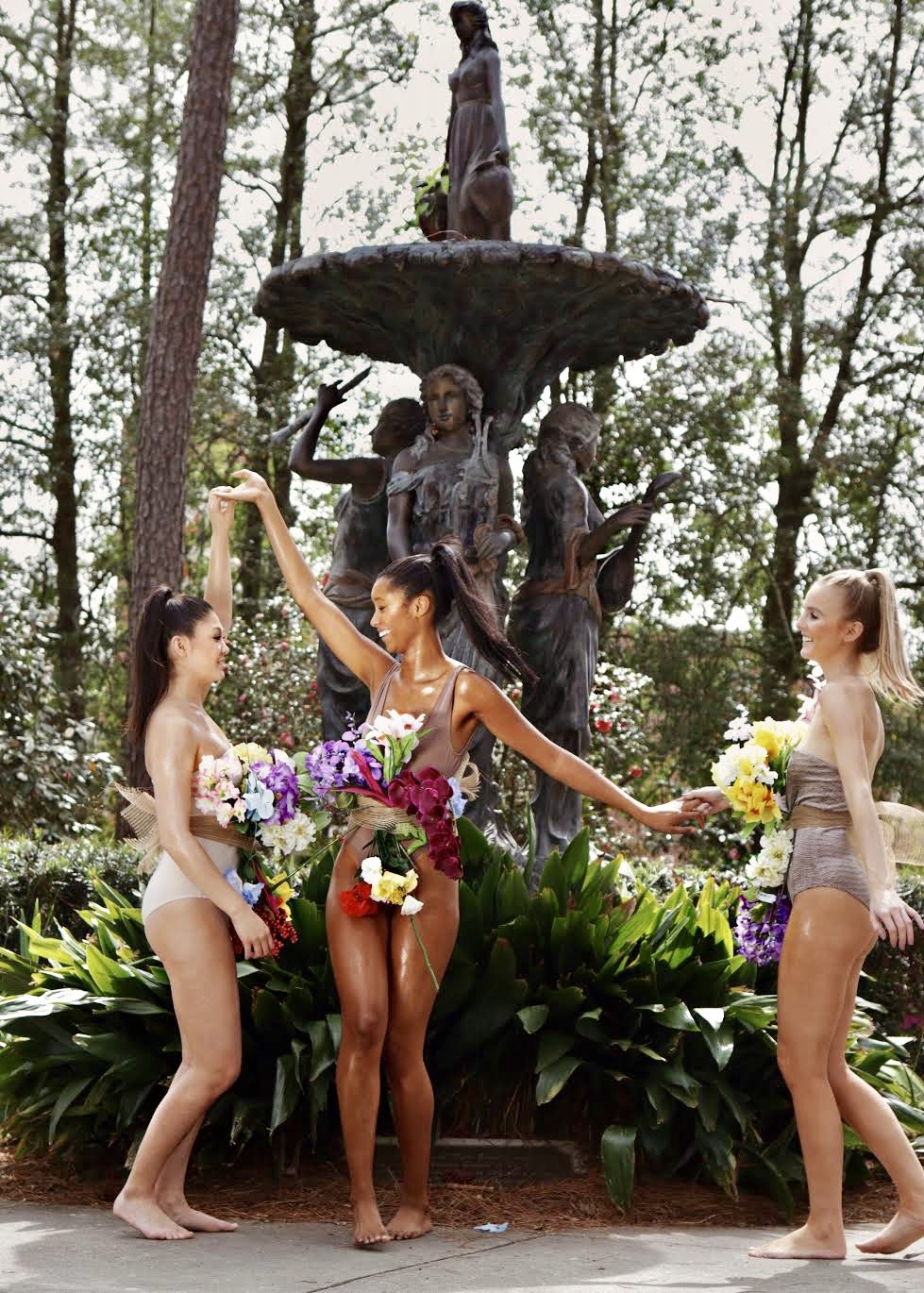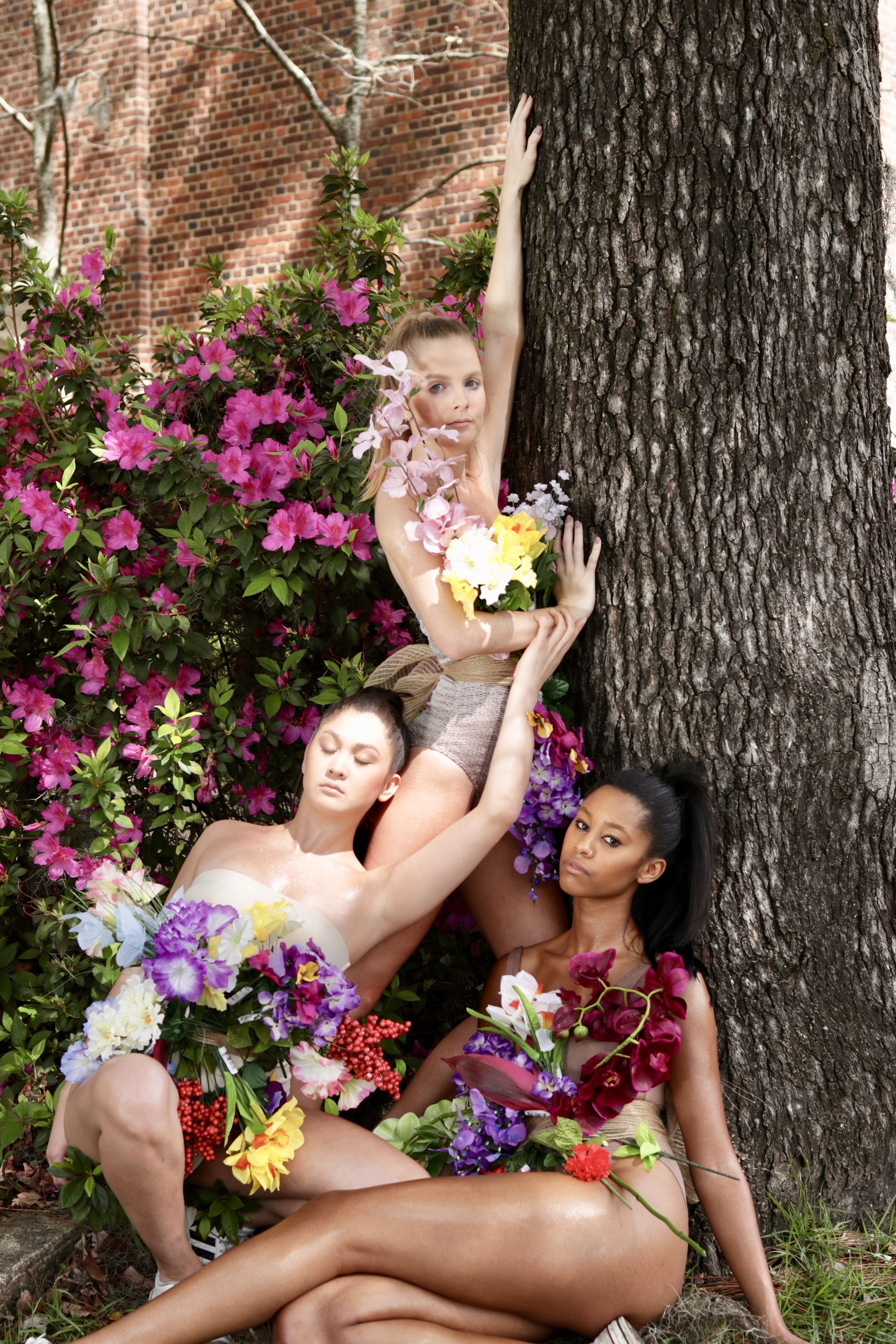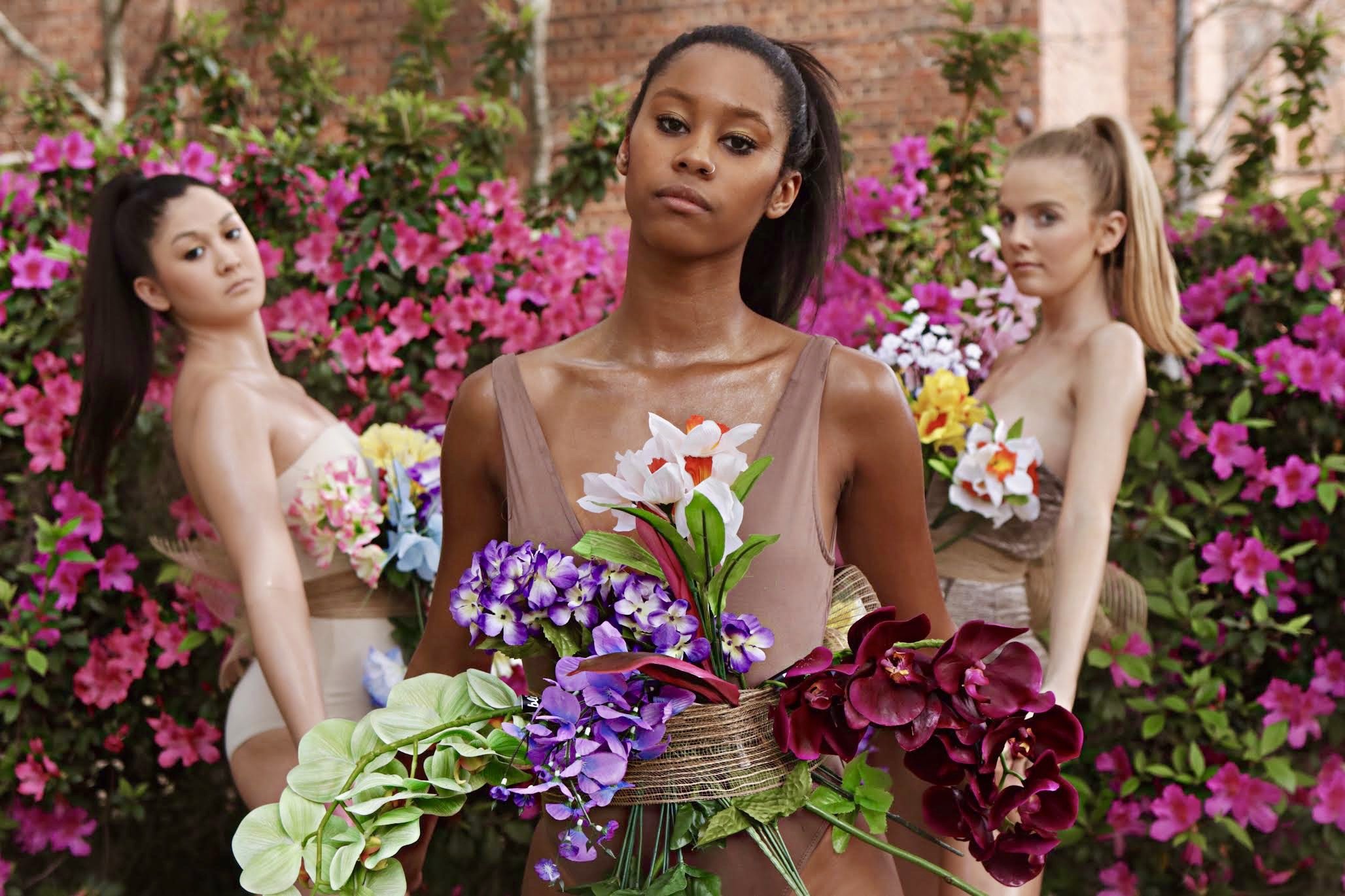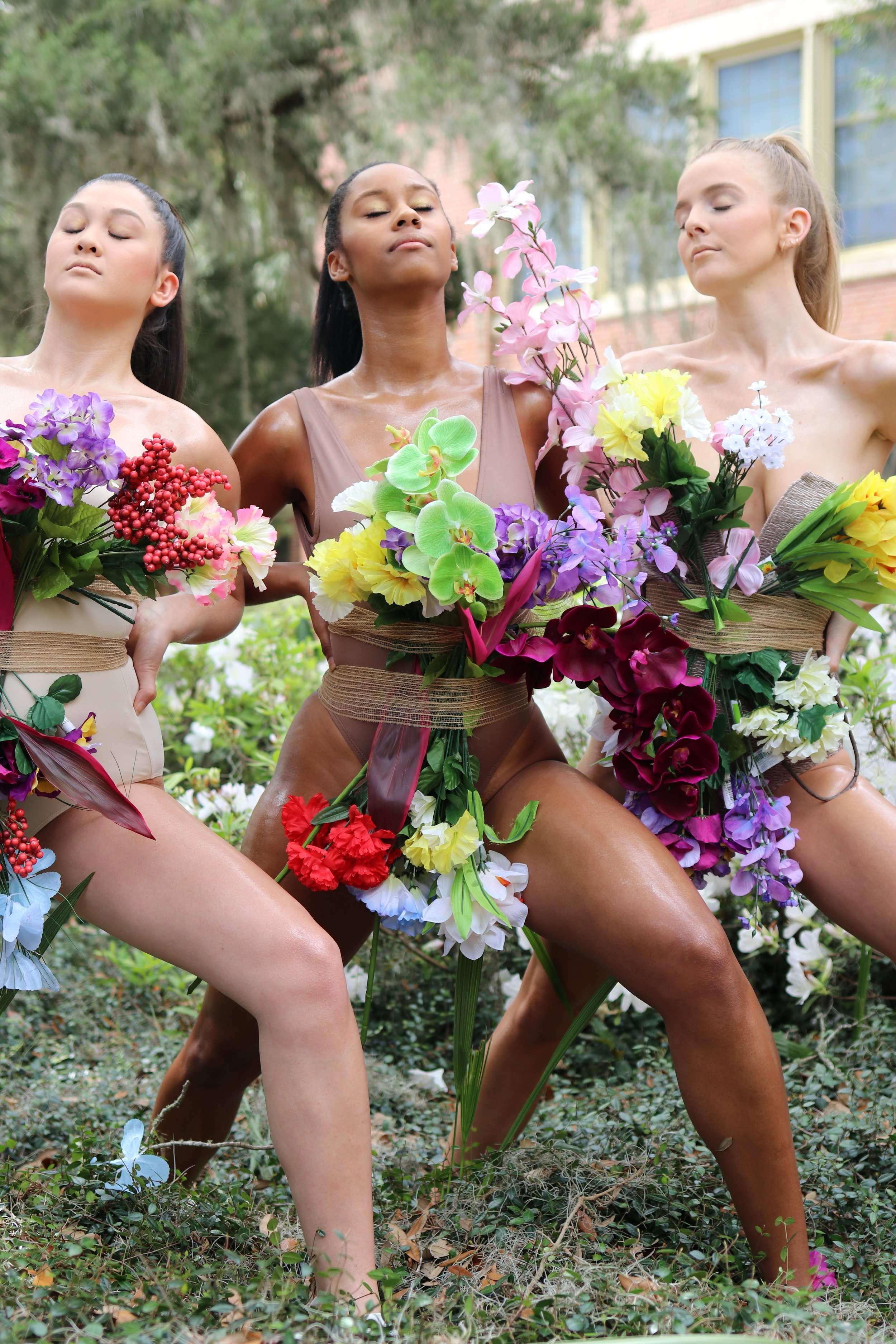Venustas
Florals have an empowering, yet beautifying effect on nature as well as the human persona. As they obtain the strength to withstand natural disasters, they simultaneously prove adaptability for regrowing and flourishing in new environments. Their dedication and representation of life is what signifies their association as a symbol of power, rather than meekness.
In antiquity, the three graces were associations of youth, beauty, and elegance. These mythological female deities were typically represented with downcast or void eyes, composed of an elegant body twisting into a dance. The association between florals and the graces juxtapose to represent the empowerment that is given back to the female population. The figures represented are engaging in direct eye contact with the viewer, challenging the age-old expectation of women as a weaker sex.
A History of Flowers:
Rose: Symbol of power and beauty and an association with Aphrodite/Venus.
Hyacinth: Named after a beautiful young man of Sparta whom was loved by the sun god, Apollo. While playing a game of discus, Hyacinthus was mortally wounded and from the blood soaked soil beneath him sprouted what we know now as Hyacinth flowers.
Narcissus: Where a vain man died attempting to embrace his own reflection in a lake, these flowers were found sprouted and have hence forth become associations with selfishness and coldheartedness.
Laurel: Associations with glory, power, and eternity.
Anemone: Originally a white flower, the Anemone turned forever red after the blood of Adonis was shed upon it.
Sunflower: The representation of a lovesick girl named Clytie who would watch the sun god, Apollo, move across the sky in his chariot. We now know this to be why sun flowers revolve their heads to follow the sun throughout the day.
Strike Out,
Concept: Emily Jensen
Photographer: Alexis Poulos
Tallahassee

